Emily Thoft is a registered guide and pilot in Alaska. She operates Ovis Outfitters with her husband, specializing in fully guided fly-out hunts for Dall sheep, grizzly bears, moose and caribou.
She Guides is sponsored by Remington Outdoor Company
I grew up with 2 older brothers and 5 boy cousins. I always wanted to do what the boys were doing.
If they were hunting and fishing, I wanted to hang out with them. I spent my childhood hunting birds in western Montana. Before I could even shoot, I would tag along and pick up birds. I harvested a few elk and deer and hunted a lot in college. I probably spent more time hunting than going to class! It wasn’t until I went to Alaska that I got to go on my first fly-out backcountry hunt. To me, that’s my favorite kind of hunting. You go out on a sheep hunt, you leave the plane and you’re gone for 8 to 10 days. You’re just 100 percent absorbed in a wild place.
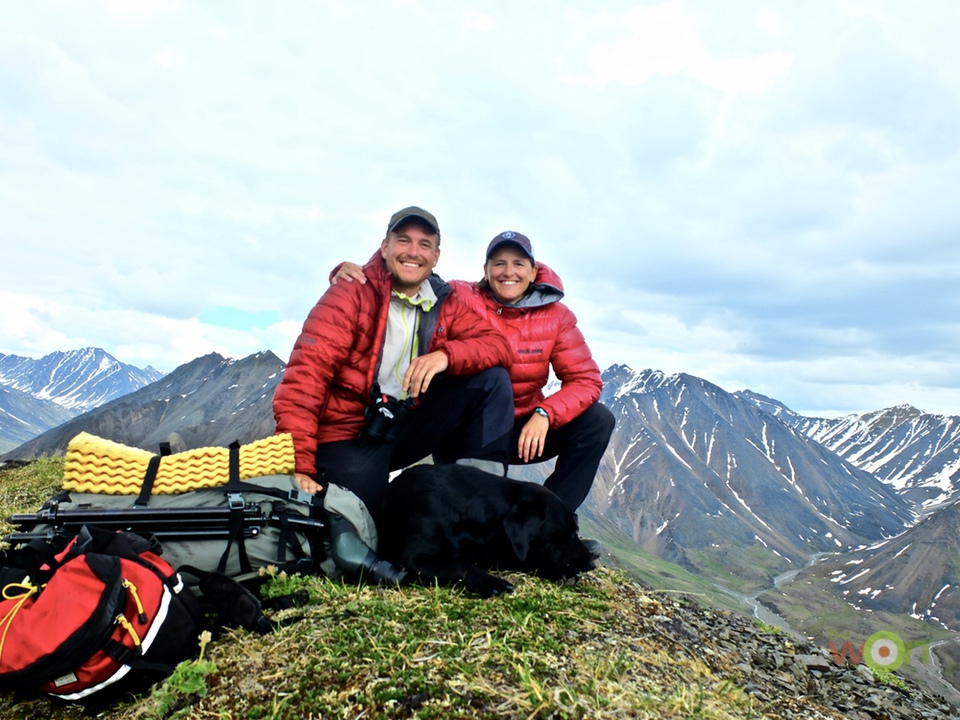
Emily Thoft and her husband scouting for sheep in June.
When I moved up to Alaska in 2010, my husband had just got his guide’s license.
I didn’t have the credentials to guide, and I couldn’t fly an airplane yet, so the only thing I could do was cook. I hate cooking, so I figured if I was ever going to get out of the kitchen, I’d better learn how to guide. The first step was learning how to do capes, so I did a lot of butchering. I went out as a packer as well. After I put my time in and fulfilled my requirements, I became an assistant guide. I did a lot of guiding as an assistant for caribou, moose and sheep. After that I became a full registered guide. I think at the time there were only 5 female registered guides in Alaska. That was a pretty big accomplishment for me.
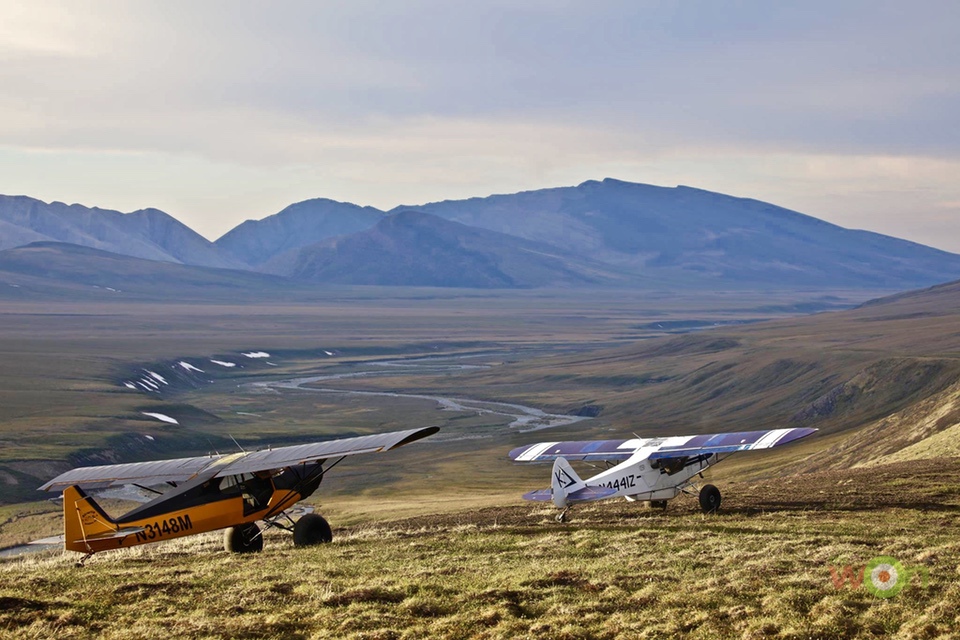
Their planes as they search for a Porcupine Caribou herd in June.
I decided I wanted to learn to fly airplanes. That part looked pretty sweet.
Now, I don’t do as much guiding as I used to. I do a lot more flying. I’ll fly out with the camp equipment, the assistant guides and clients, and do meat and gear trips. From start to finish it took me about 3 years to get my pilot’s license. You’d think in Alaska there would be plenty of opportunities to learn how to fly. It’s actually really hard to find a certified flight instructor and get good weather in which to learn. I’ve had my private pilot’s license for 4 years.
There’s a big difference between flying airport-to-airport and flying a Super Cub and landing on ridgetops and gravel bars. As soon as I got my tailwheel endorsement, I just tried to fly every single day and practice. I would try to mimic what we might find while setting up hunting camps. My husband has taught me so much about how to get into short spots and rough areas in different wind conditions. It challenges you every single day, all day. I like being challenged, or else I get bored.
Our whole guiding business revolves around the airplane. It’s all fly-out hunts.
Obviously, my favorite time to fly is when the weather’s nice. You see a little bit of everything when you’re flying around. You can fly 60 to 100 miles per day and you’re covering a lot of country. That, to me, is the coolest part about flying—seeing so much country and seeing it from a different perspective than you see on the ground. Up in the Brooks Range on a nice day, there are always caribou, grizzly bears, moose and wolves.
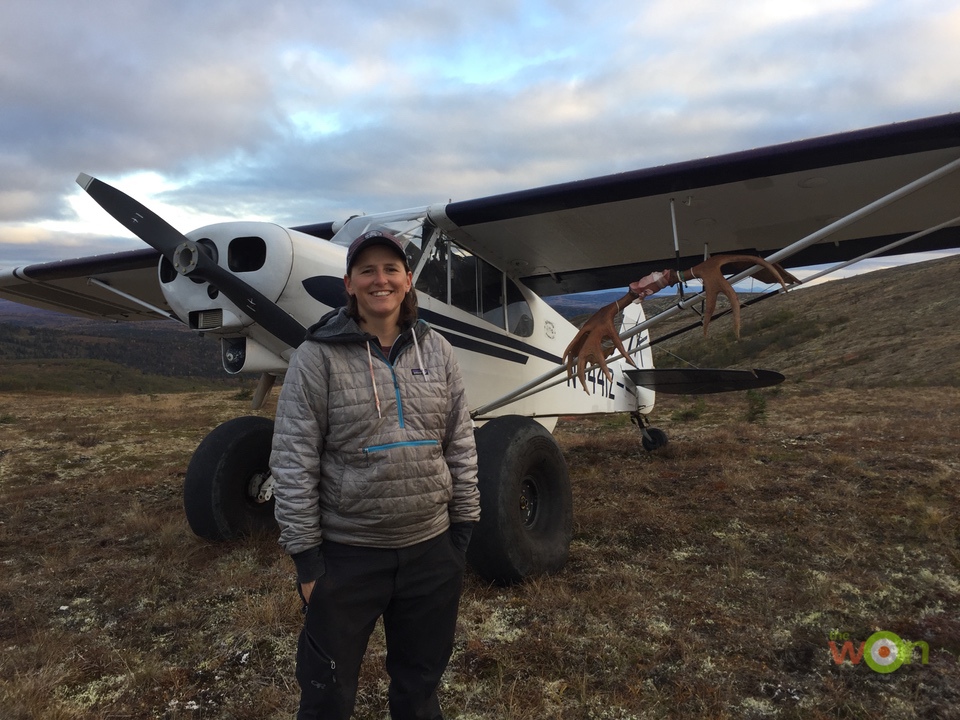
Emily Thoft hauling a moose out this past fall.
If you’re thinking about getting your pilot’s license, let me offer one piece of advice.
If you take an introductory lesson and the end you think, “Ahh, yeah, well, I don’t know…” don’t do it. It’s expensive as hell, it’s really time-consuming and it’s really hard. But, if you land at the end of that lesson and you say, “That’s the coolest thing I’ve ever done! I will sell body parts to be able to pay to learn to fly this thing on my own,” you’re a pilot. I was fortunate that it’s part of our business. Once I got my pilot’s license, we were saving money by not hiring extra pilots. It’s pretty hard to get into flying unless you’re going to use it as a business and make money back.
We built our outfitting business from the ground up. I think that first year we had 1 client.
The second year we had a couple more. I thought to myself, “Wow, people are paying us to take them hunting. We better not screw this up!” We hunt really good country; working as hard as we possibly can. Our business grew by word of mouth. Now we guide 5 months out of the year. We hunt wild animals, so there are some things you can’t control. If you do the things you can control to the best of your ability and have a little bit of luck, then clients go home happy and successful. I want to gear our business more toward being a “wilderness experience.” If you’re going out there to have fun and enjoy nature, you’re always going to have a successful hunt, whether you harvest an animal or not.
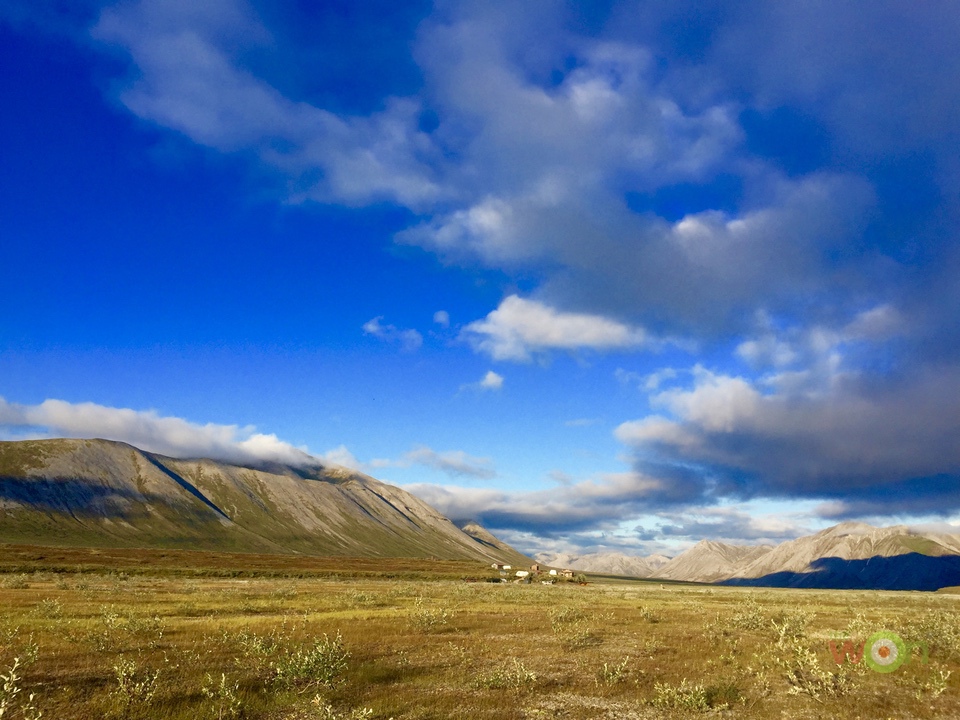
The Thoft’s lodge on the north side of the Brooks Range.
The Arctic National Refuge is a sportsmen’s paradise and we shouldn’t be drilling in it.
Where we hunt up in the Brooks Range, we’ve been awarded a federal concession. You can go on a sheep hunt and you have the potential to see caribou, grizzly, wolves, wolverines and golden eagles. There is no way we should ever be doing anything to compromise the integrity of that ecosystem. In Alaska, you can hunt every national wildlife refuge. It’s public. It’s not this closed-off place that no one’s allowed to go to. The word “refuge,” I think, is confusing. I didn’t realize that until we had some people from Backcountry Hunters & Anglers up this summer and one of the guys said, “You know, you can’t hunt most refuges in the Lower 48.”
People don’t know that you can hunt the Arctic National Refuge. They think it’s this big closed-off chunk of land you can’t access anyway, so why not drill it? Where they’re proposing to drill is right where the Porcupine caribou herd calves every June. These caribou wander from Alaska to Canada; they know no international boundaries. If we Americans start drilling and messing up their calving grounds, we’ve screwed up an international species. It’s a special place to me. It’s where I have most of my experience guiding.
Alaska is remote. You need to be just as mentally prepared for your hunt as you are physically prepared.
You have to be prepared to stick it out through rough weather. If we can’t fly, we can’t come to get you! There’s probably going to be more than one time on a hunt that you’ll be cold, wet and uncomfortable. If you can persevere through a little bit of discomfort, you’ll be rewarded with incredible experiences. I guided a client on a sheep hunt where it started snowing as soon as we got out there. It snowed for 3.5 days; we didn’t leave our tents. Finally, when the weather broke he could have said he wanted out, but he didn’t. He killed a ram that evening, and we packed it out under the Northern Lights. My advice is stick it out, and chill out; you’ll be rewarded with experiences you won’t get anywhere else.
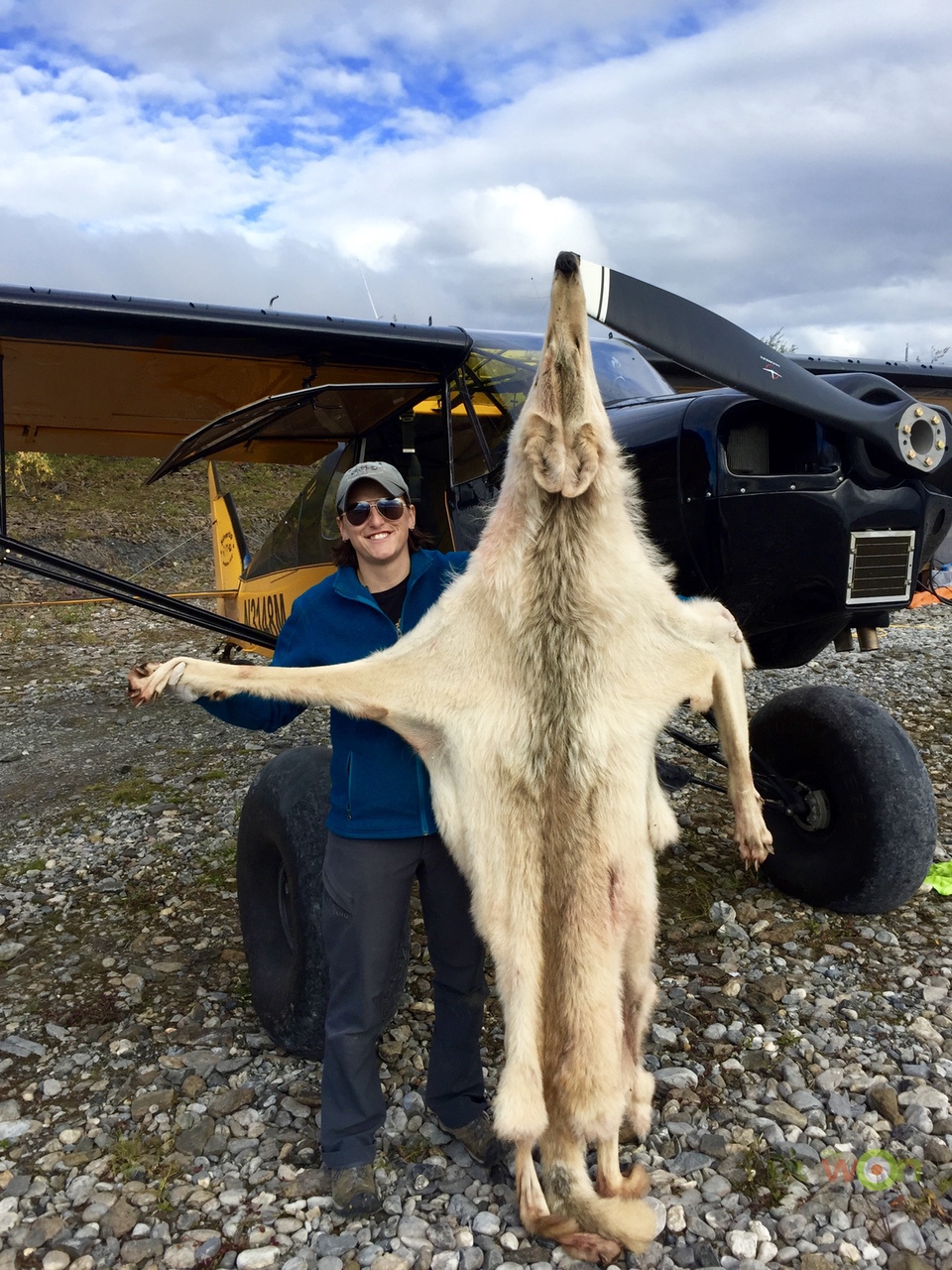
Emily with a a client’s wolf she was fleshing.
We preach vital shots on our big game.
Some other people say to shoot the shoulder to take an animal down. If you shoot something in the vitals, it’s going to die. If you shoot something in the shoulder, like a moose or a grizzly bear, it’s just going to pick up that shoulder and run off as fast as it could on 4 legs. You just wounded that animal if you don’t get a chance at a follow-up shot, and that just sucks. Another reason for choosing a vital shot is that if you shoot in the shoulder, you just wasted a ton of good meat. Especially if you’re shooting a ballistic tip—that quarter is not going to be salvageable. Our goal is to get our clients within 200 yards for a shot.
There are a hell of a lot of easier ways to make money than what we’re doing.
We do it because it’s a blast. It’s the coolest job in the world. If you’re running so many clients that you’re not having fun, then what’s the point? If you’re too busy to get out hunting for yourself, what’s the point? You never know what’s going to happen in the future. I never want to look back and say I didn’t get to do something because I was too busy. A Dall sheep is on my bucket list. Next season, that’s my goal: to carve out time to go sheep hunting for myself.
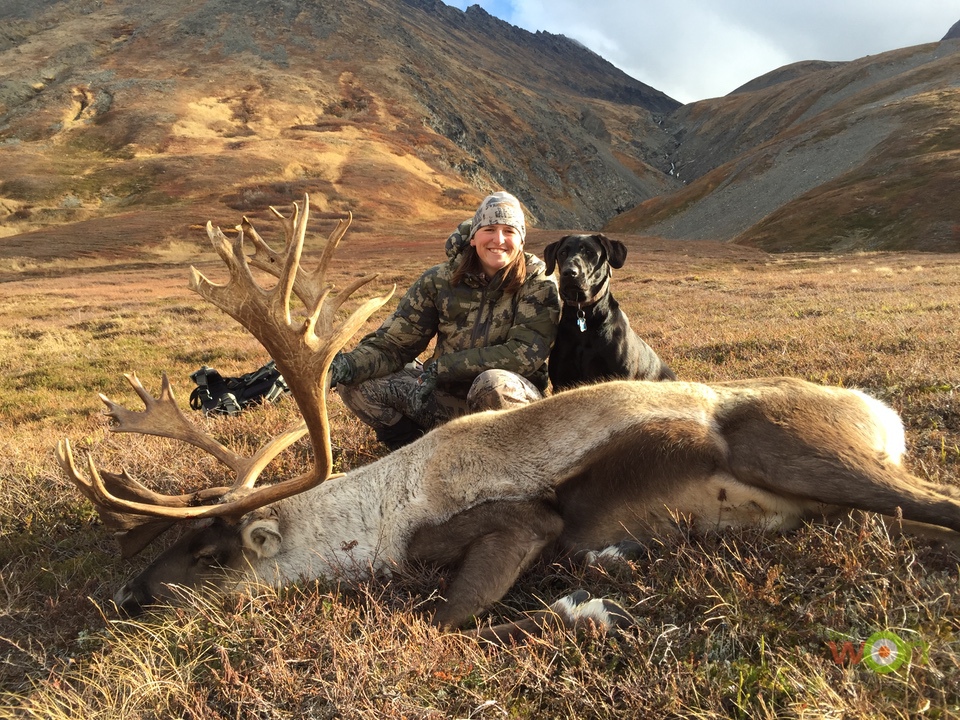
Oscar and Emily with a caribou.
Don’t let anyone ever tell you that you can’t follow your dreams.
That sounds super cheesy, but if you want something, go for it. Don’t let anything get in your way. If you’re interested in becoming a guide, be prepared to work hard. Sometimes outfitters were reluctant to let me tag along, so I knew that I had to work hard to prove myself. When we hire assistant guides, we look for people who are tough. You might be a good hunter, but around camp you have to work hard, too. There’s a whole lot more that goes into it than all the glory of harvesting a sheep and having your picture taken with your client. If you’re not willing to bust your butt and work your way up, find something else to do.
I absolutely love a .300 Win. Mag. It’s super versatile—just what you want for hunting in Alaska.
Ovis Outfitters (907) 676-0471
Guided hunts for Dall sheep, grizzly bears, moose and caribou.
Courtney Nicolson is an outdoor writer, hunter, and angler based in Denver, Colo. She is an active member of numerous conservation groups and is passionate about empowering women in the outdoors. Courtney is the senior producer/editor for Outdoor Sportsman Group Networks. View all posts by Courtney Nicolson